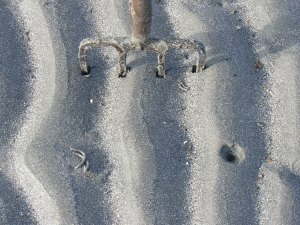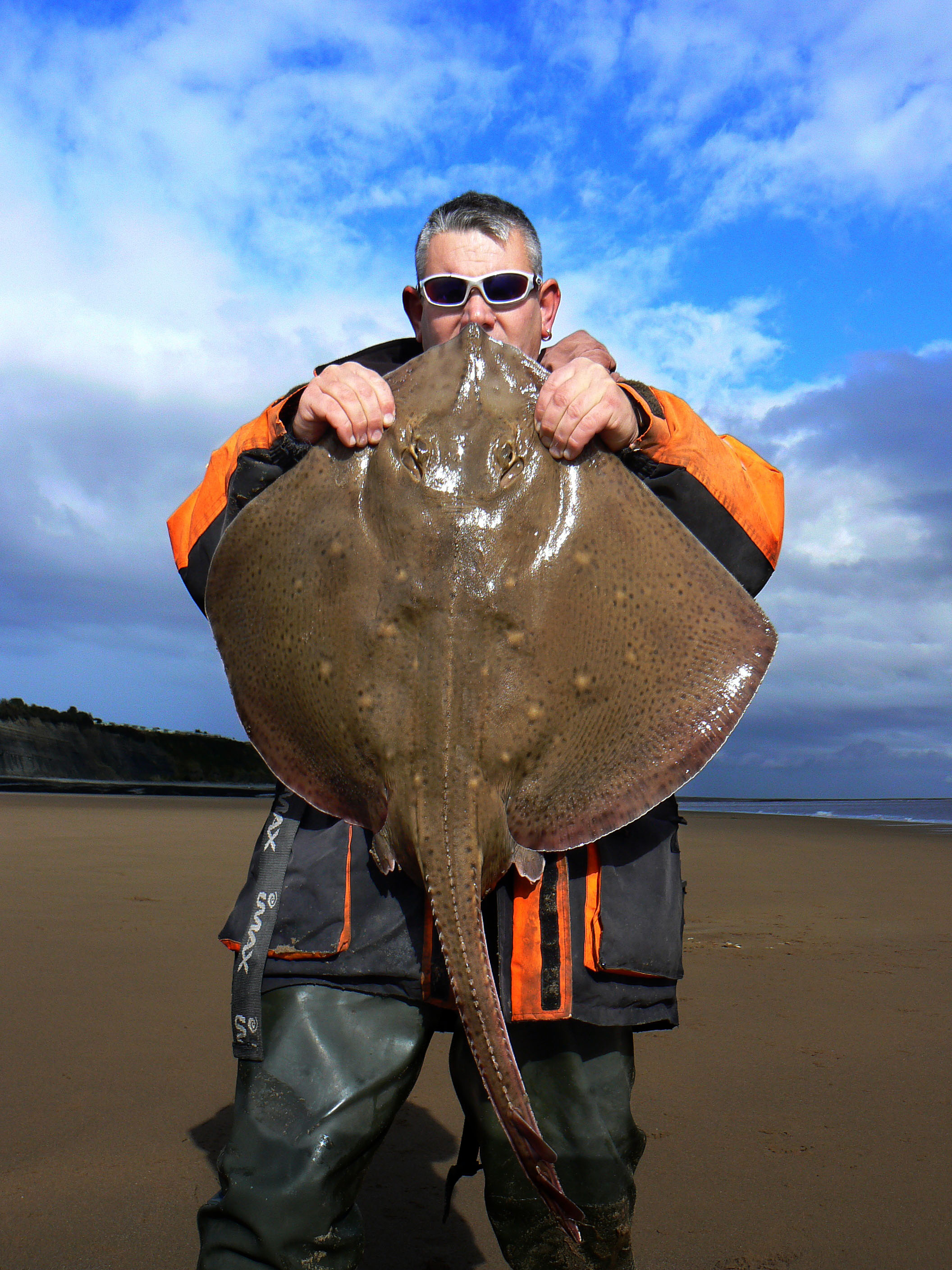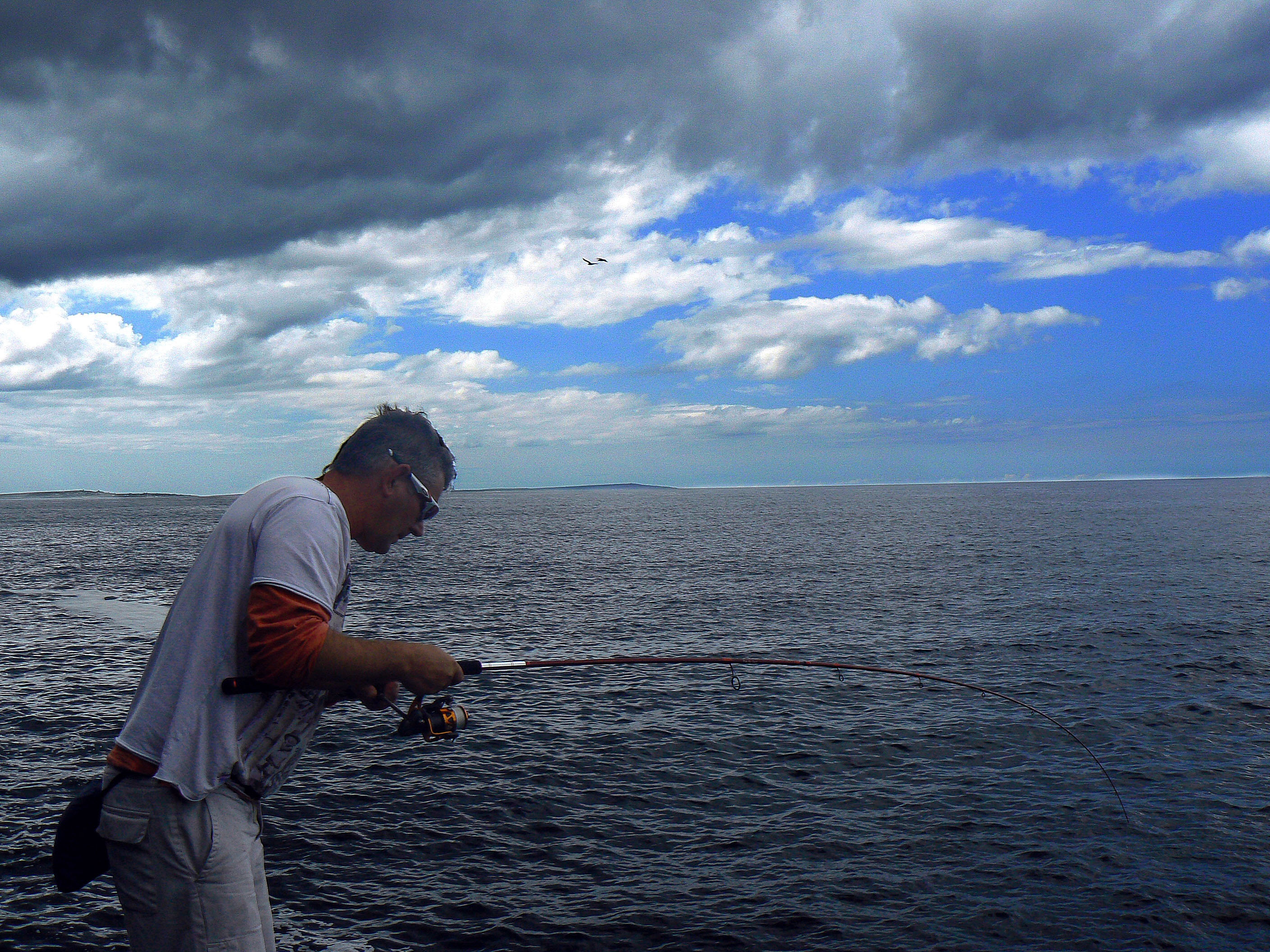I am blessed with being able to collect my own bait and indeed the fish I hunt are determined by what bait is freely available to me at any given time of year. With the exceptions of King Rag (pollack and wrasse) and Squid( anything at all but huss and ray mainly) any bait I use is collected from local beaches. Over in my little part of the world there isn’t a great demand for fresh lug and to the best of my knowledge there are no shops in this county or the next selling it. The benefit from this is our beaches are not raped, people digging there have no need to strip the beds as they know the worms will still be there on their next visit. Beginners at digging may get a helping hand and there are very few secret bait beds. We also don’t seem to have as big a crab moult here on the open coast as they do in other parts of the country or even just up on the Shannon. It could be that I just haven’t found them yet. I have put a few traps out and hope to start checking them as soon as I am able. Summer hardbacks are plentiful and an excellent big wrasse bait.
The methods I will describe are not necessarily the right methods and may not be the best methods but they have all worked for me in my time here and kept me fishing for the last six years. If you think I am wrong or want to share a different opinion I am always ready to learn new ideas.
Blow lug would be my main target when digging. Everyone has seen castings and blow holes on the beach which give away the worms location. It is as simple as that, the more castings you come across the more worm you will find. Size of casting is getting into more dubious territory as there are many factors which will affect the cast, size of worm cannot be guaranteed by a large cast it may belong to an average worm which is much deeper down. High air pressure and cold air temperatures may also contribute to worms going deeper.
In my opinion a potato fork is the best tool for digging worm, although I have been using a regular garden fork for a while now I am finding I get more breakages with the smaller fork. I have tried using a graft (small digging spade) but as a lot of the sand I dig in is either very shelly or contains lots of large stones it makes heavy work of it.
Other items you will need are a tide table. If you hit the beach at high water you will not find any worms so it is important to be aware of tide states. A Spring tide may expose beds which produce fantastic worms but are only ‘open’ for a few hours a month. A bucket is another essential item. It can be easier to have one main bucket with several smaller buckets inside it for separating your worms as you dig. Broken worms will sour good whole worms and cause them to deteriorate and blow quicker. You may well encounter several types of bait and wish to keep them separate, maddies ,whites, sandeels and shellfish can all come up from the same spot. A habit that I have gotten into is to partially fill your main bucket with clean seawater. this not only cleanses the mucus and sand from the worms but more importantly stops your bucket blowing off down the beach spilling its precious cargo in the act. I have taken to wearing a pair of marigolds on colder days, no, I’m not coming out or admitting to cross dressing or a rubber fetish but I have found that my fingers work better when they are not water-logged and frozen. A towel to dry your hands on and a drink of water are also a good idea as is some form of waterproof footwear.
 When I am looking for a good lug bed to dig I like to find a cluster of castings close together which will allow me to trench dig rather than single dig. I then dig a trench parallel with the shoreline.This can be determined in length by the number of castings or by how bigger area you want to cover. you may find a single trench like this may produce enough worms for your session.
When I am looking for a good lug bed to dig I like to find a cluster of castings close together which will allow me to trench dig rather than single dig. I then dig a trench parallel with the shoreline.This can be determined in length by the number of castings or by how bigger area you want to cover. you may find a single trench like this may produce enough worms for your session.
 In this case I have thrown the spoil to the left hand side of the trench I am digging. As the shingle on the head of the beach is draining the trench will fill with water, the spoil pile helps to divert some of this. Although there are no hard and fast rules I find the majority of worms are around the same depth so once you have come across the productive layer there is generally no need to go any deeper in that trench. I rely on seeing the worm as I dig it or laying on the spoil. I don’t rake back to find if each forkful has been successful.
In this case I have thrown the spoil to the left hand side of the trench I am digging. As the shingle on the head of the beach is draining the trench will fill with water, the spoil pile helps to divert some of this. Although there are no hard and fast rules I find the majority of worms are around the same depth so once you have come across the productive layer there is generally no need to go any deeper in that trench. I rely on seeing the worm as I dig it or laying on the spoil. I don’t rake back to find if each forkful has been successful.
For these pictures I only dug around a meter square to demonstrate the technique but a wider area may be required particularly on a well dug beach.
 The next step for me is to dig a second trench at approximately ninety degrees to the first. Much of the exertion of digging is due to opening new holes but using the trench system allows you to keep working back from at least one open side all the time.
The next step for me is to dig a second trench at approximately ninety degrees to the first. Much of the exertion of digging is due to opening new holes but using the trench system allows you to keep working back from at least one open side all the time.
I did think that I kept the bucket at the head of each trench but in practice I found it easier to keep moving it and to keep it to the right of me so the pick-up and recovery of each worm became an arching swing rather than a two stage system.
 When the two boundary digs are in place I move back up to dig alongside the first trench. The spoil is thrown in such a manner than it not only exposes any worms but also that it starts to backfill the first trench. I continue to dig side by side trenches until I have completed the digging square or exhausted the worms available. I know it is not a popular idea but some effort should be made to at least try a bit of backfilling and minimize to impact of the dig.
When the two boundary digs are in place I move back up to dig alongside the first trench. The spoil is thrown in such a manner than it not only exposes any worms but also that it starts to backfill the first trench. I continue to dig side by side trenches until I have completed the digging square or exhausted the worms available. I know it is not a popular idea but some effort should be made to at least try a bit of backfilling and minimize to impact of the dig.
When large beds of worms are not available it may be necessary to single dig. To do this you need to be able to target an individual worm or set of castings
 The above image clearly shows the cast and the blow-hole. The worm lives in a U-shaped burrow between the two points. In my own experience the greater the distance between the two points the deeper the worm is.
The above image clearly shows the cast and the blow-hole. The worm lives in a U-shaped burrow between the two points. In my own experience the greater the distance between the two points the deeper the worm is.
 Once a cast has been decided on the dig begins. Make the first forkful about as far parallel to the casting as the holes are apart: so if the distance between cast and blow is ten inches start your dig ten inches away to the side. It is then only a case of digging up forkfuls of sand until the worm is exposed.
Once a cast has been decided on the dig begins. Make the first forkful about as far parallel to the casting as the holes are apart: so if the distance between cast and blow is ten inches start your dig ten inches away to the side. It is then only a case of digging up forkfuls of sand until the worm is exposed.
Storage and Keeping Worms
I have at one time or anther tried many different methods of keeping lug. Some themes run through all methods. The metabolism of the worm must be stabilized and slowed down. To this end any worms you want to last must be kept in a temperature controlled environment. A domestic fridge is ideal and a dedicated bait fridge is perfect. You wont get your wife nagging you that the bait stinks and more importantly the door will be open less often and the temperature will remain constant.
Before storage worms should be sorted and any damaged worms put aside. I keep damaged worms in a container with dry newspaper in. This toughens up the skins and absorbs the liquid they are leaking. Damaged worms need to be used within two or three days.
Any handling seems to shorten the life of worms so I keep them in cat litter trays or takeaway cartons. Line both of these with newspaper but put enough clean seawater to cover the worms in each one. Do not overcrowd the worms, a dozen good-sized blow lug are enough for a single takeaway container. When out on the shoreline don’t forget to collect a few bottles of clean sea water to store in the fridge with you hard dug worms. This will allow you to change the water in the holding trays every day and the fact you have stored the water in the fridge means that very little temperature change will take place. Any blown or sick looking worms should be removed on a daily basis but again with the minimum disturbance to the other worms.
As for how long will your worms last, it is very difficult to answer. I have had one batch last twenty-one days in the fridge, other worms have blown on the way home from digging. On average you can expect seven to ten days for worms to be tanked.
The day before use I estimate how many worms I want for a session and put these selected worms in dry paper to toughen them up. moving them to the beach I like to use a fresh water style bait box which I find easier than rummaging through sheets of newspaper when the wind is blowing. Once worms are put in the paper to toughen up they tend not to like being put back into tanked water and will only last a few days back in the fridge.
























good article, and very informative.
One question, do anglers in Ireland use bait pumps??
There are a couple of lads from Dover Sac who bring bait pumps over with them but to be honest I have never seen anyone else using them. There isnt a great demand for lug out here in Clare,There are no shops that stock live worm. We dont get a run of winter cod so bass anglers would be the main people digging. I have never used one myself and dont think most of the marks I dig on would be suitable as they are stony broken ground
Great work! That is the kind of info that are supposed to be shared
across the net. Disgrace on the search engines for now not positioning this submit upper!
Come on over and talk over with my website . Thank you =)